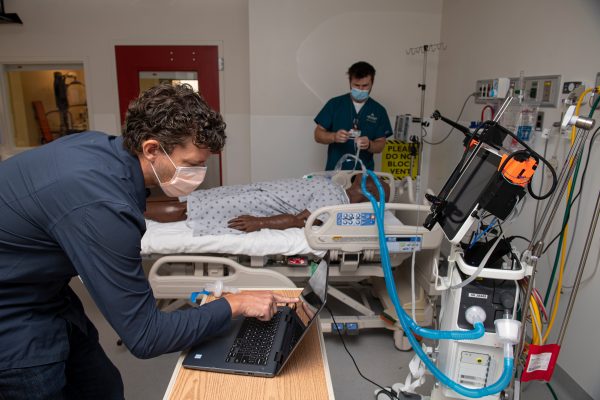In: Robotics, Augmented Reality, and Devices

Remote control for COVID-19 patient ventilators
- August 17, 2020
- COVID-19Robotics, Augmented Reality, and Devices
A new robotic system designed by Johns Hopkins researchers may help hospitals preserve protective gear, limit staff exposure to COVID-19, and provide more time for clinical work.

Jeremy D. Brown wins two grants to investigate haptic perception in robotic applications
- July 22, 2020
- Center NewsRobotics, Augmented Reality, and Devices
Grants from the NIH-funded Interdisciplinary Rehabilitation Engineering Research Career Development Program (IREK12) and the National Science Foundation (NSF) will support Brown's research on haptic perception in robotic applications.

Meet humanity’s new ally in the coronavirus fight: Robots, CS’s Russ Taylor, Los Angeles Times
- April 15, 2020
- COVID-19Robotics, Augmented Reality, and Devices
John C. Malone Professor Russell Taylor tells The L.A. Times that medical robots could be useful in intensive care units where risk of contamination is a major worry.

Russell Taylor elected to National Academy of Engineering
- February 12, 2020
- Center NewsRobotics, Augmented Reality, and Devices
Russ was recognized for his contributions to the development of medical robotics and computer integrated systems.

Canine Comfort
- February 6, 2020
- Robotics, Augmented Reality, and DevicesUser-Centered Design
A hospital stay can be a confusing and scary experience for many children. Chien-Ming Huang and team are designing robotic companions, modeled after service animals, for pediatric patients.

Enter the Surgineer
- January 13, 2020
- Robotics, Augmented Reality, and DevicesStudent Stories
Jeff Siewerdsen’s full-year course series, called Surgineering, aims to prepare graduate students to bring new engineering perspectives to the operating room.